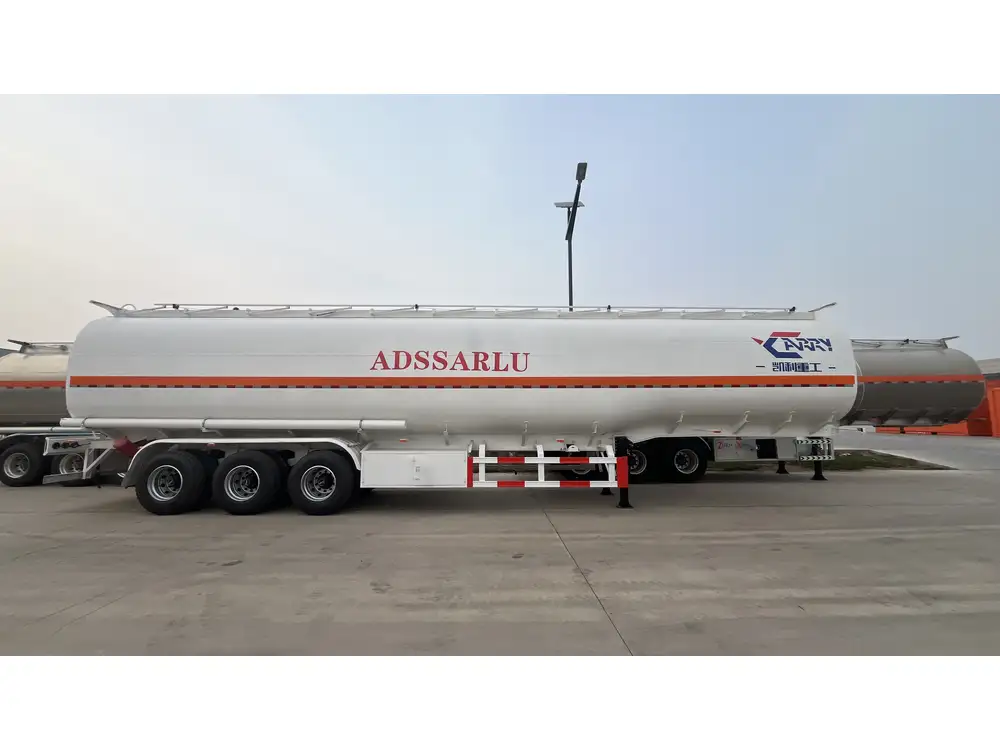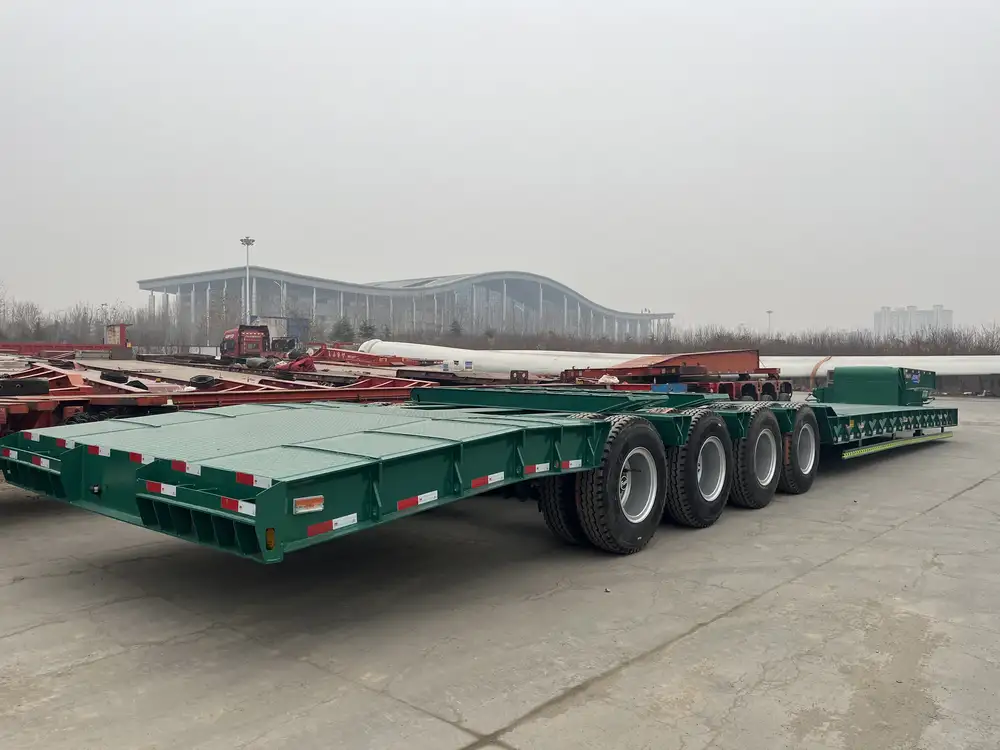The act of wiring control systems in a dump trailer might, at first glance, seem like a task reserved for those with a deep understanding of automotive mechanics. Yet, this guide will unpack the nuances of this process, ensuring that anyone, whether a seasoned professional or a novice, can wire a control system on their Hawk dump trailer effectively and safely. Through structured explanations, detailed procedures, and insightful tips, we will illuminate every aspect of this task.
Understanding the Basics of Dump Trailer Wiring
Before diving into the intricate steps of wiring control systems on a Hawk dump trailer, it is essential to familiarize ourselves with the basic components involved in this process. A dump trailer wiring system primarily consists of:
| Component | Description |
|---|---|
| Power Source | Typically a 12V battery that supplies power to the control system. |
| Control Switch | The interface that allows the user to operate the dump trailer, usually a toggle or rocker switch. |
| Relay | An electromechanical switch that amplifies the signal from the control switch to power the hydraulic system. |
| Hydraulic System | The mechanism that lifts the trailer bed, usually consisting of a pump and a cylinder. |
| Wiring Harness | A collection of wires that connects all components together. |
Safety First: Precautions to Consider
Before initiating any wiring tasks, safety must be prioritized. Here are some essential safety precautions:
- Disconnect the Battery: Ensure the battery is disconnected to prevent short circuits.
- Wear Protective Gear: Gloves and safety goggles can protect against electrical hazards.
- Work in a Well-Ventilated Area: Proper ventilation is crucial when working with electrical components.
- Follow Manufacturer Instructions: Always refer to the Hawk dump trailer’s manual for specific wiring diagrams and instructions.

Step-by-Step Guide to Wire Control System
1. Gather Necessary Tools and Materials
Before commencing the wiring process, ensure you have the following tools and materials ready:
- Wire strippers and crimpers
- Electrical tape
- Screwdrivers (flathead and Phillips)
- A voltmeter for testing connections
- A wiring harness (specific to Hawk trailers, if available)
- A control switch (compatible with your system)
- A relay (rated for the desired load)
2. Identify Wiring Locations and Components
To wire the control on a Hawk dump trailer, begin by understanding where each component will be located:
- Control Switch: Typically mounted on the trailer’s frame or within the towing vehicle’s cabin.
- Relay: Often housed near the battery or in a location accessible for maintenance.
- Hydraulic Pump: Usually located close to the trailer’s axle or on the frame.

3. Wiring the Control Switch
The control switch is crucial for the operation of your dump trailer. Follow these steps:
- Locate the Switch: Choose an accessible and convenient spot to mount the control switch.
- Connect the Wires: Depending on the switch type, connect the positive (usually red) wire to the switch’s input terminal.
- Using the Wiring Harness: If a pre-made harness is available, connect it, ensuring colors match. Typically, a ground wire (black) should be secured to a clean metal surface for a good connection.
4. Installing the Relay
The relay serves to handle the power required to operate the hydraulic system. Here’s how to install it:
- Mount the Relay: Secure it to a metal surface in the vicinity of the battery to ensure good grounding.
- Connect the Coil Terminals: Wire the control switch to the relay’s coil terminals. One terminal goes to the switch, and the other should be connected to the ground.
- Connect Power to the Relay: Use a heavy gauge wire (typically 12-14 gauge) from the battery positive terminal to the relay’s input terminal. Ensure this connection is secure to handle the load.
5. Wiring the Hydraulic System
With the control switch and the relay set up, the next step is to connect the hydraulic system:
- Pump Power Connection: Connect the pump’s positive lead to the normally open terminal of the relay. This allows the relay to power the pump when the control switch is engaged.
- Grounding the Pump: Attach the negative lead of the hydraulic pump to a reliable ground point near the trailer chassis.

6. Establishing Battery Connections
When all components are connected, reattach the battery:
- Connect the Positive Terminal: Ensure the connection is tight to avoid voltage drops.
- Connect the Negative Terminal: Always connect the negative last to prevent any sparks.
7. Testing Your Connections
After completing the wiring, you must test the system to ensure everything works harmoniously:
- Use the Voltmeter: Before attempting to operate the control switch, check the voltage at each connection point to confirm there are no short circuits or faulty wires.
- Engage the Control Switch: Press the switch to operate the hydraulic system. Watch for any unusual sounds or delayed responses, which could indicate wiring issues.
8. Troubleshooting Common Issues
If the dump trailer doesn’t operate as expected, here are some common problems and troubleshooting tips:
| Issue | Possible Cause | Solution |
|---|---|---|
| Pump does not operate | Faulty relay or connections | Check wiring connections and replace the relay if necessary. |
| Control switch feels loose | Mounting issue or faulty switch | Secure the switch; consider replacing if defective. |
| Hydraulic system does not lift | Insufficient fluid or airlocks in the hydraulic lines | Check hydraulic fluid level; bleed air from the system as needed. |

Final Considerations: Maintenance and Regular Checks
Once you have successfully wired up the control system on your Hawk dump trailer, regular maintenance is essential to ensure long-term performance. Here are a few maintenance tips:
- Regularly Inspect Wiring: Routinely check for frays, corrosion, or loose connections.
- Hydraulic Fluid Checks: Keep an eye on the hydraulic fluid level and replace it according to the manufacturer’s schedule.
- Test Control Functions: Periodically operate the control system to ensure it functions smoothly.
Conclusion: Reaping the Benefits of Proper Wiring
Understanding how to wire control systems on Hawk dump trailers can significantly impact operational efficiency and safety. By following this comprehensive guide, users can gain confidence in their ability to perform this task independently. Successfully wired systems enhance the utility of dump trailers across various applications, tackling heavy loads and improving productivity in demanding environments.
Embracing this knowledge not only empowers owners but also ensures that Hawk dump trailers operate as intended, delivering exceptional value and performance for years to come.



